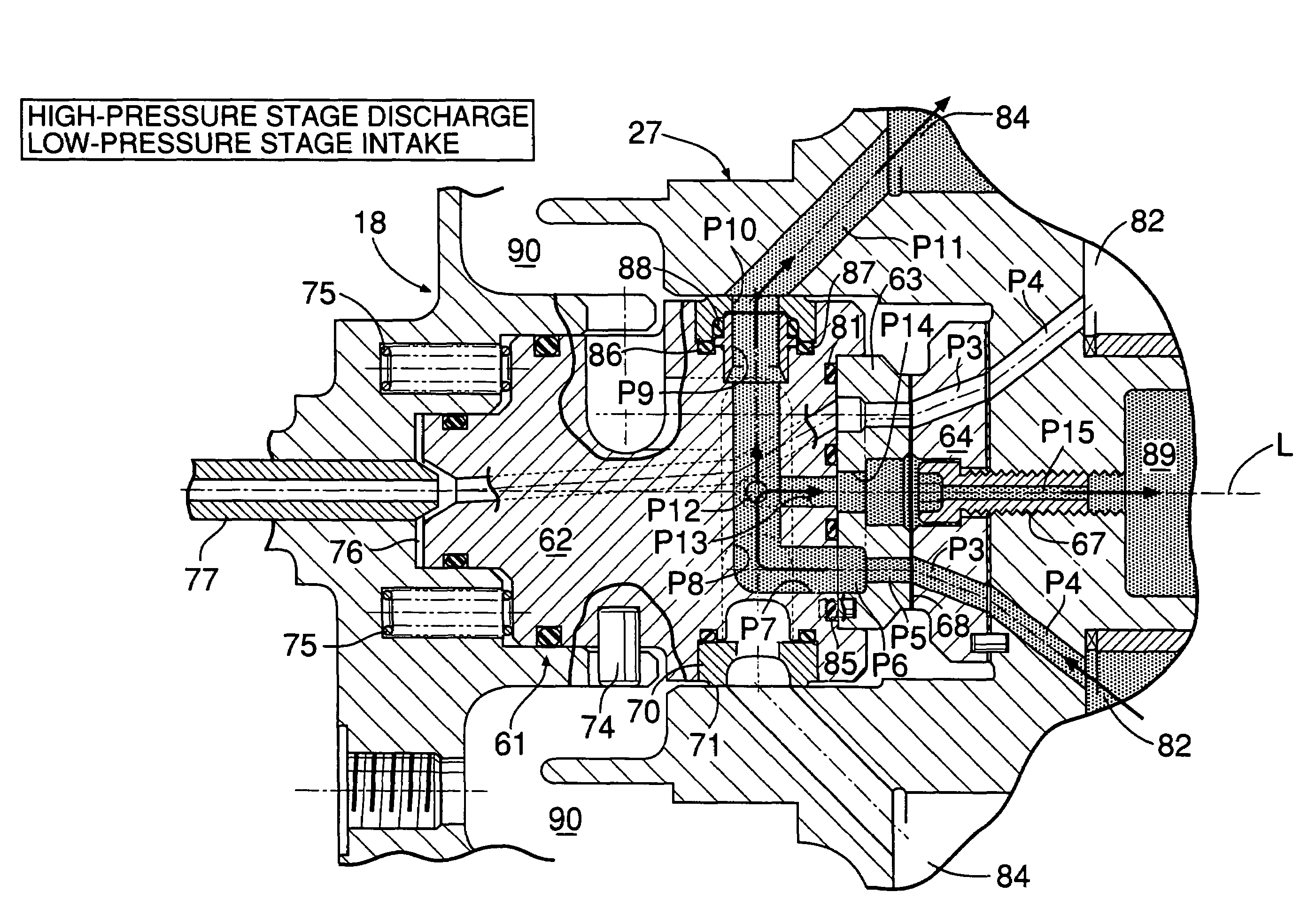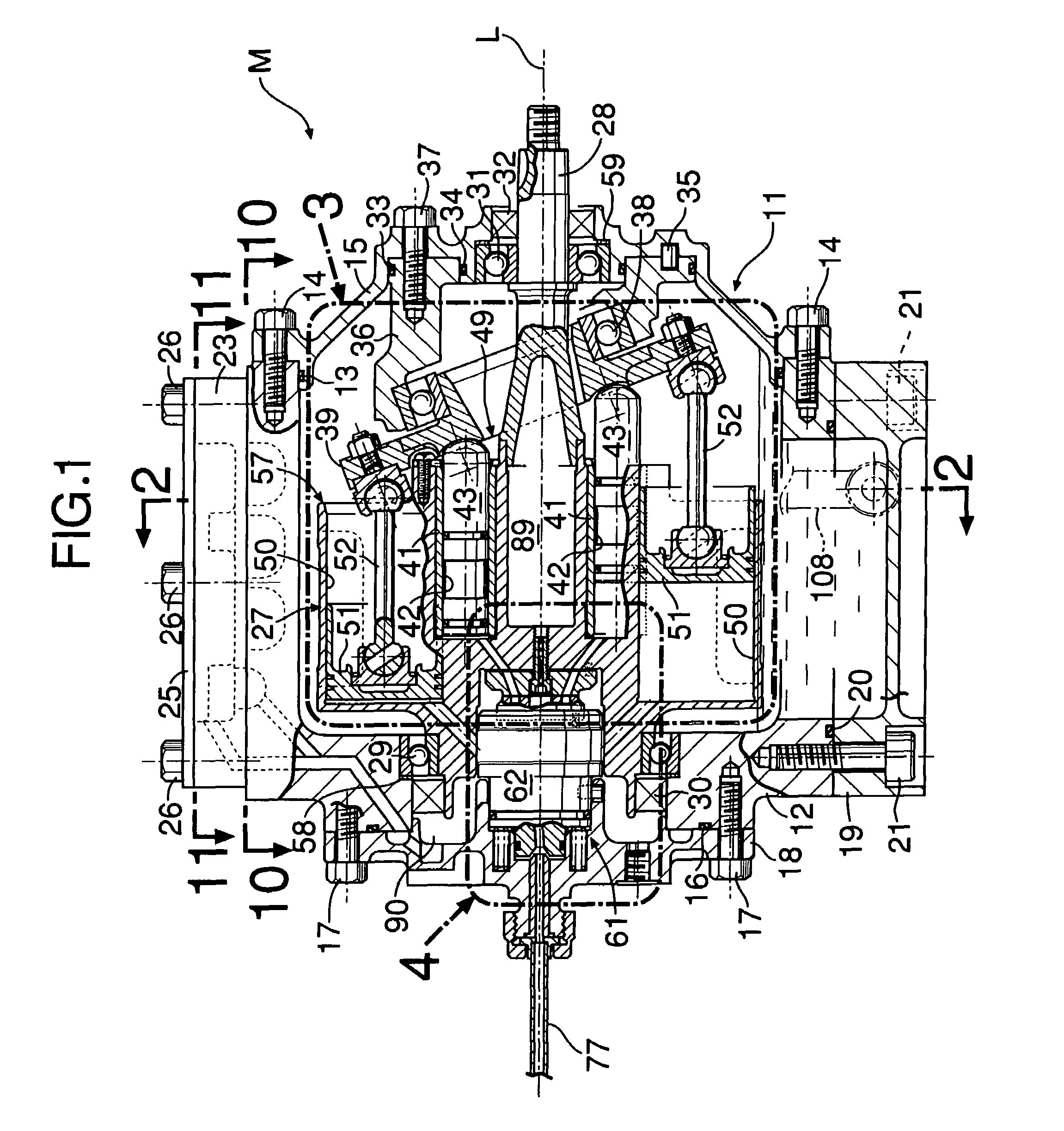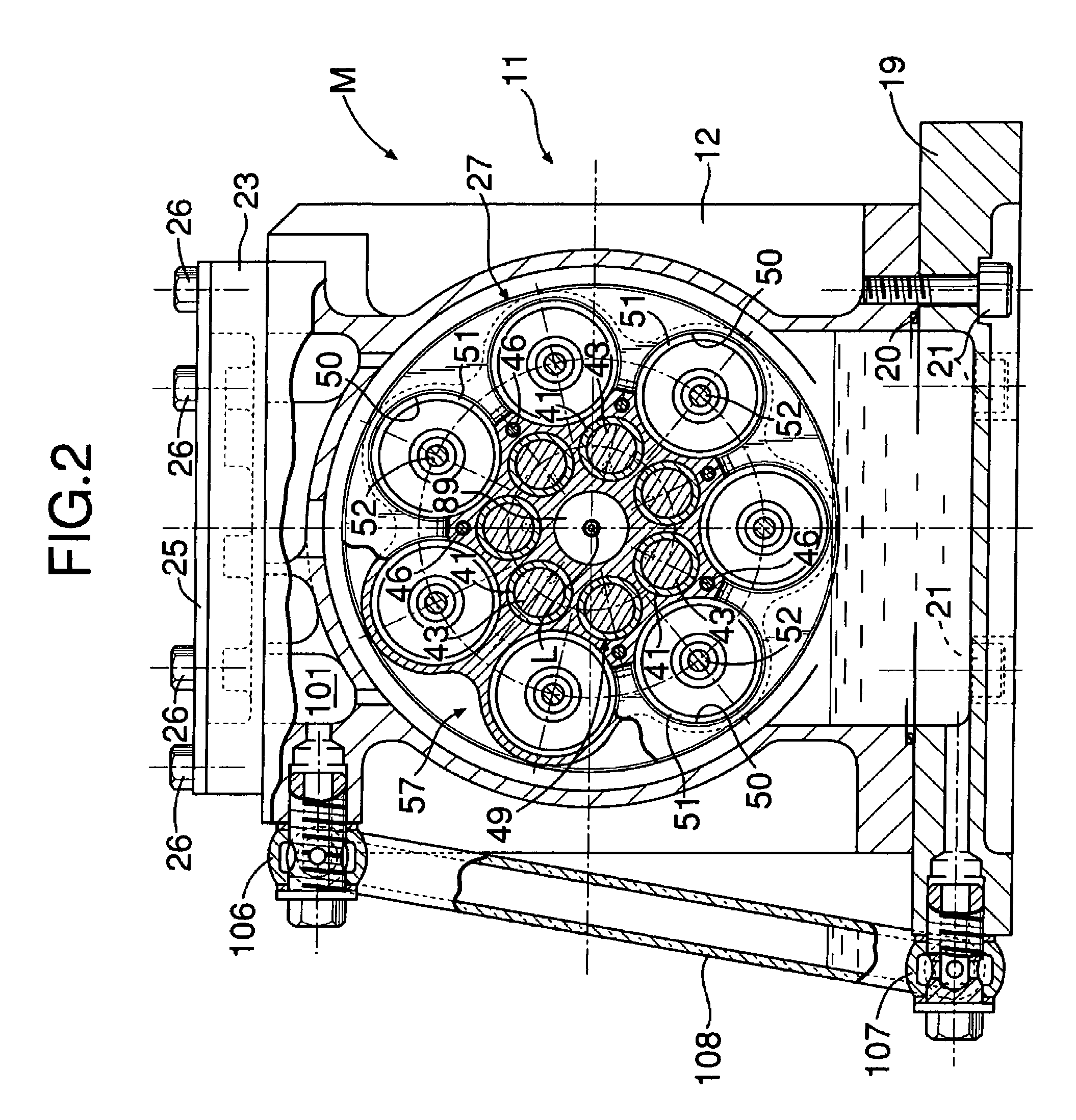Expander
a technology of expulsion and displacement, applied in the field of expulsion, can solve the problems of large amount of steam leakage, increase in the amount of steam leakage, increase in the dimensions, etc., and achieve the effect of decreasing the dimensions and increasing the outpu
- Summary
- Abstract
- Description
- Claims
- Application Information
AI Technical Summary
Benefits of technology
Problems solved by technology
Method used
Image
Examples
first embodiment
[0022]the present invention is explained below by reference to FIG. 1 to FIG. 18.
[0023]As shown in FIG. 1 to FIG. 3, an expander M of the present embodiment is used in, for example, a Rankine cycle system, and the thermal energy and the pressure energy of high-temperature, high-pressure steam as a working medium are converted into mechanical energy and output. A casing 11 of the expander M is formed from a casing main body 12, a front cover 15 fitted via a seal 13 in a front opening of the casing main body 12 and joined thereto via a plurality of bolts 14, and a rear cover 18 fitted via a seal 16 in a rear opening of the casing main body 12 and joined thereto via a plurality of bolts 17. An oil pan 19 abuts against a lower opening of the casing main body 12 via a seal 20 and is joined thereto via a plurality of bolts 21. Furthermore, a breather chamber dividing wall 23 is superimposed on an upper surface of the casing main body 12 via a seal 22 (see FIG. 12), a breather chamber cove...
second embodiment
[0076]the present invention is now explained by reference to FIG. 19.
[0077]FIG. 19 shows a sliding surface 68 of a stationary valve plate 63 and corresponds to FIG. 6, which shows the first embodiment. The resilient force of preset springs 75 and the pressure of high-temperature, high-pressure steam acting on a pressure chamber 76 give a sealing surface pressure to the sliding surface 68, but it is difficult to secure a uniform sealing surface pressure over the entire area of the sliding surface 68. This is because the high-temperature, high-pressure steam is supplied to a second steam passage P2 and third steam passages P3 passing through the sliding surface 68, and this high-temperature, high-pressure steam acts to detach the stationary valve plate 63 from a movable valve plate 64 and thereby reduce the sealing surface pressure. On the other hand, medium-temperature, medium-pressure steam is supplied to a fifth steam passage P5 and the third steam passages P3 running through the s...
third embodiment
[0079]the present invention is now explained by reference to FIG. 20.
[0080]The third embodiment is a modification of the second embodiment; a second pressure channel G2 communicating with a second steam passage P2 through which high-temperature, high-pressure steam passes is omitted, and only a first pressure channel G1 communicating with a fifth steam passage P5 through which medium-temperature, medium-pressure steam passes is provided. In accordance with the present third embodiment, not only does the structure become simple compared with the second embodiment, but also the effect of recovering abrasive powder can be enhanced and, moreover, the amount of leakage of steam can be reduced in comparison with the second embodiment.
[0081]Although embodiments of the present invention are explained above, the present invention can be modified in a variety of ways without departing from the spirit and scope thereof.
[0082]For example, in the embodiments the first group of axial piston cylin...
PUM
 Login to View More
Login to View More Abstract
Description
Claims
Application Information
 Login to View More
Login to View More - R&D
- Intellectual Property
- Life Sciences
- Materials
- Tech Scout
- Unparalleled Data Quality
- Higher Quality Content
- 60% Fewer Hallucinations
Browse by: Latest US Patents, China's latest patents, Technical Efficacy Thesaurus, Application Domain, Technology Topic, Popular Technical Reports.
© 2025 PatSnap. All rights reserved.Legal|Privacy policy|Modern Slavery Act Transparency Statement|Sitemap|About US| Contact US: help@patsnap.com



